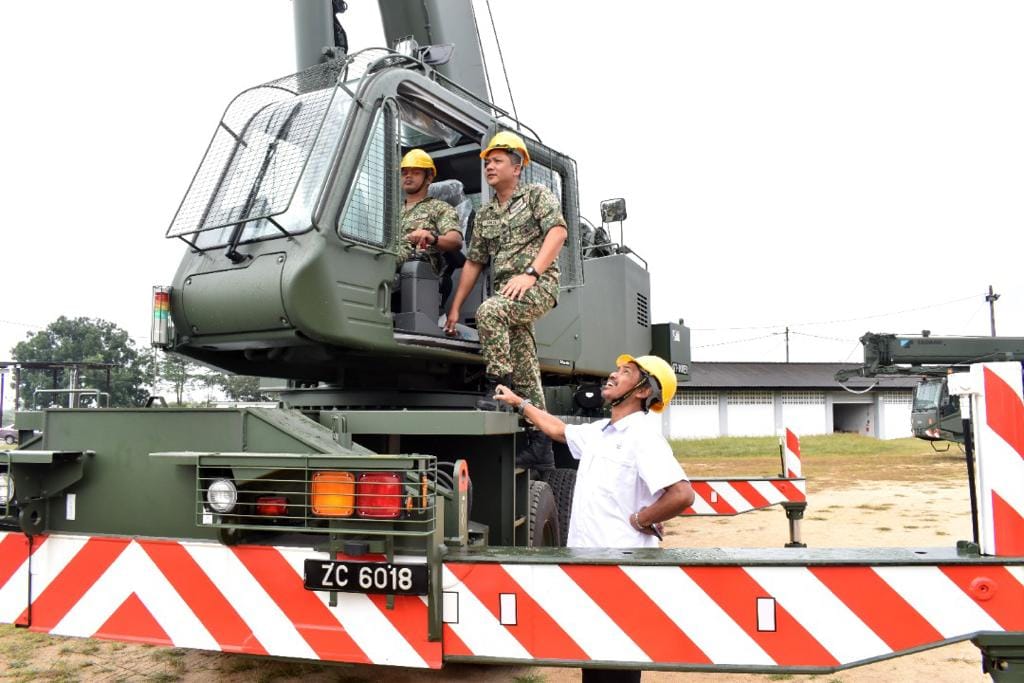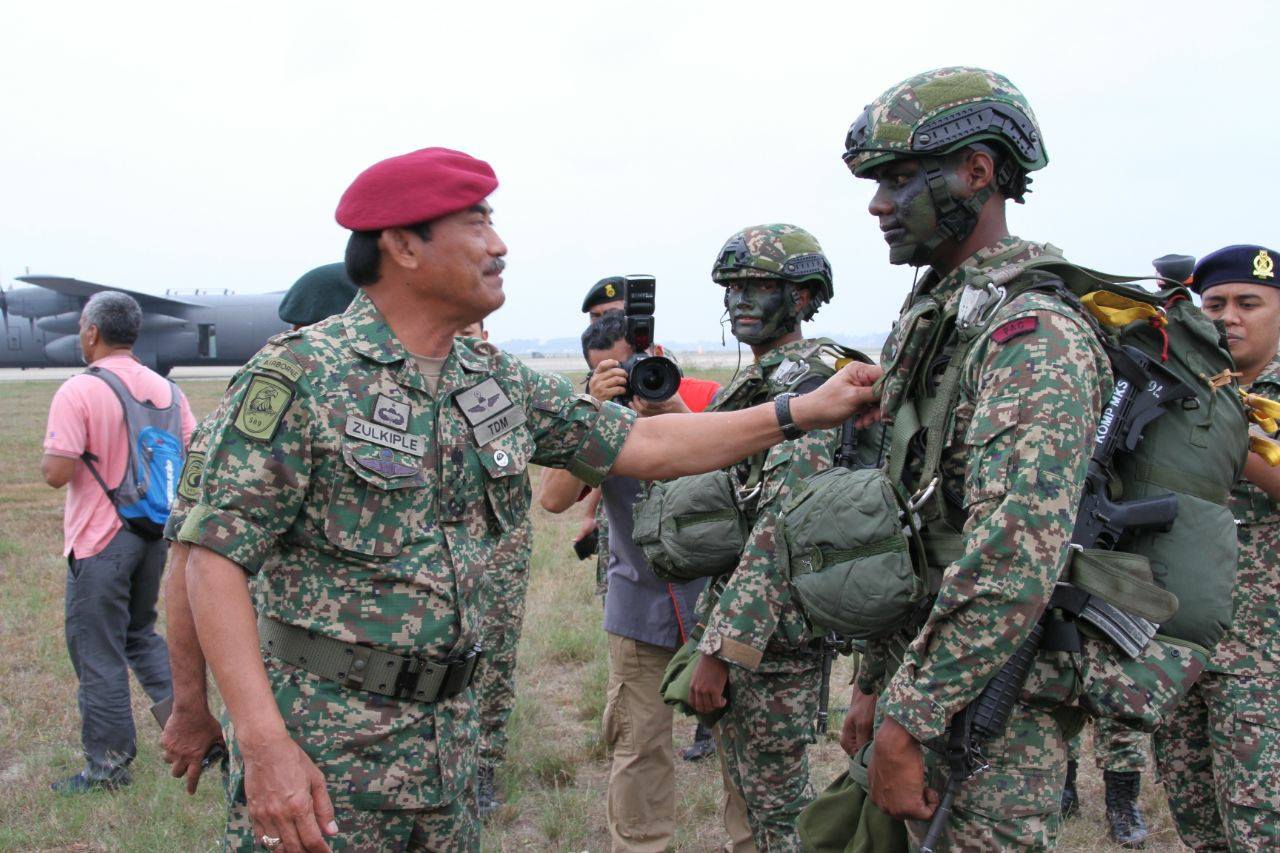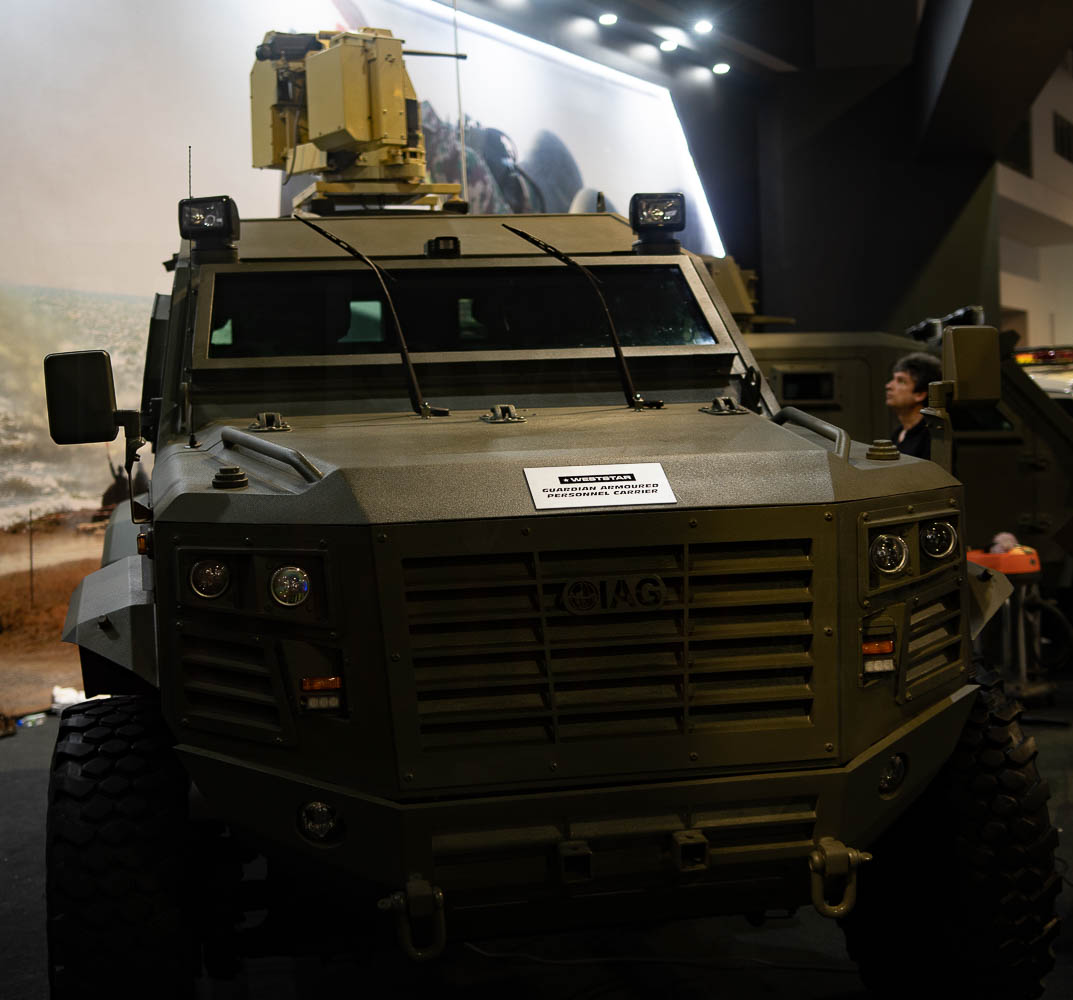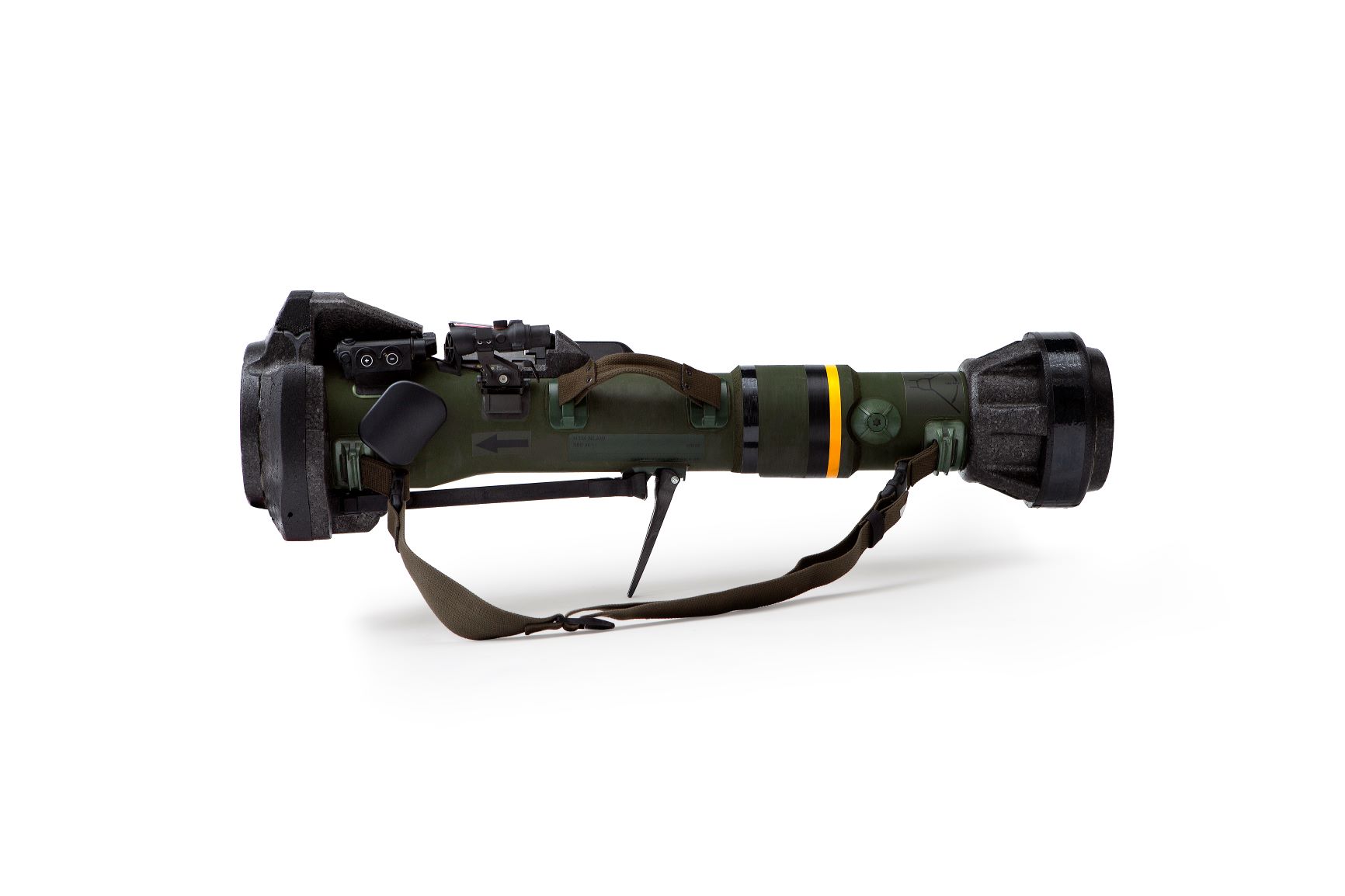
SHAH ALAM: The Army – after a long pause – is conducting its rotation/transfer exercise involving units and personnel from and around Sabah, Sarawak, Labuan, and Semenanjung. A tender for the rotation/transfer exercise was published on March 20 and closes on April 18.
The rotation/transfer exercise also involved in transferring class A, B and C vehicles, which can move on its own or otherwise between the four areas. Class A is armoured, B soft-skin and C are support or engineering vehicles.
The tender call for 2,400 container/bonded trucks to carry all sort of stuff from the units including weapons and ammunition; hiring of low loaders to carry vehicles below or higher than 20 tonnes and labour costs; 20 six-car capacity carriers and 60 twenty motorcycle capacity carriers. All of this are inclusive of the labour and ancillary costs.
Also being sought are 362 mobile cranes; 540 forklifts; 90,000 carboard boxes including packing accessories; 70 wooden boxes and ancillaries; 150 pallets and 2400 packaging including labour costs.
Despite the specifications listed above it is unclear how many units and their personnel are involved in rotation/transfer exercise. The last major rotation exercise made known publicly was in 2016 when the 1st Royal Ranger Regiment and 6th Royal Ranger Regiment swapped camps. 1 RRD is now based at Camp Wadierburn in Kuala Lumpur while 6th RRD now operates from the Ulu Tiram Camp in Johor Bharu.
It must be noted several units in Sabah were due for rotation/transfer to Sarawak and Semenanjung but the move was stopped following the Lahad Datu incident in 2013. As posted in an earlier article, instead of rotating and transferring existing units to Sabah from Sarawak and Semenanjung, the Army decided to stand up new units like the 5th Armoured Regiment. One unit, 26th RMR, was re-constituted in 2013 and move to Tawau, Sabah around 2015/2016.
With the tender specifications involved the transfer of the armoured, soft-skin and support vehicles – this rotation/transfer exercise it may involve mechanised, engineering, movement, and armoured units.
— Malaysian Defence





The RRD transfer was mostly a paper exercise, swapping the designation of the units, so that the senior RRD unit would do ceremonial duties alongside the senior RAMD unit.
This new rotation exercise is clearly to see if the army can rapidly deploy complete units from Semenanjung to East Malaysia. The takeaway from this is that our military needs to have this type of rapid deployment capability, across south china sea, rather than seeking for an amphibious capability. The army and the navy needs to have the same view of this, when looking to get a new MRSS ship to replace the MPCSS.
… hulubalang – ”rather than seeking for an amphibious capability.”
Who is seeking an amphibious capability per see? I assume you’re referring to ”amphibious assault” which is different to ”amphibious movement” – one operational; the other administrative. The main rationale behind the MPSS was never ”amphibious assault” anymore than Batman wanted to seduce Pippy Longstocking. As I pointed out on numerous occasions if there is requirement to move stuff from Port A to Port B any sea lift vessel will suffice. If however there is a need to move stuff from port A to a beach with no facilities that’s where the utility of a MPSS comes in.
… hulubalang – ”The takeaway from this is that our military needs to have this type of rapid deployment capability”
They’ve had this ”takeaway” from the 1980’s… You would have noticed that we have a preference for things to be able to be airlifted and what do you think the rationale behind 10 Para Brigade was? It wasn’t for fun…
….hulubalang – ”The army and the navy needs to have the same view of this, when looking to get a new MRSS ship to replace the MPCSS.”
Never mind what you think they need to do but they actually have put a lot of thought into it. For decades now…
Nothing wrong with getting both rapid deployment & amphibious capability.
Military need to be able to act on any contingency and we shouldn’t assumed they would always have access to secure port.
zaft – ”Nothing wrong with getting both rapid deployment & amphibious capability.”
Which we’ve had for quite a long time now. You would have noticed that we had a pair of ex USN LSTS and a ex RN LST and that we practised beach landings. You also would have noticed that although the MPSS can cater for a variety of contingencies; that its main role as far as sea lift goes is ”amphibious movement” as opposed to ”amphibious assault” [for which we lack the key enablers anyway] and that we’ve long had plans for MAS/Air Asia planes and MISC ships to supplement MAF sea and air assets in times of emergency. Another point to note is that Sabah has a much larger troop presence compared to pre 2013/Lahad Dato days.
Zaft – ”Military need to be able to act on any contingency”
Militaries factor in all manner of contingencies and have contingency plans in place but actually focus on a select few; those that can be handled and those which are likely. No military can ”act on any contingency” because resources aren’t unlimited…
Zaft – ” we shouldn’t assumed they would always have access to secure port.”
The MAF does foresee the possibility that ports might not be available; hence the need for a MPSS which can deliver stuff to a beach but chances are there will be ports available. Ports in Sabah include Tawau, KK, Sepanggar, Kudat, Sandakan and others [may not be Rotterdam or Shanghai but they have berthing facilities and cargo handling equipment]. Not far from Sabah there is also Labuan and Miri. If we reach a stage where all our ports were badly damaged by missile strikes then we’d be buggered anyway and having the ability to land on a beach will not make much of a difference.
Zaft – I guess the challenge remains funding. As is no more money for MRSS ships for 2 maybe 3 RMK if LMS remains the priority – Batch 2 original request was 8 ships but it seems first order is only 3 to 5 ships. Be curious if they go for an assault type (helicoper carrier type) or the more traditional dock landing type.
I never said anything about unavailability of port in our territory.
The things is the DWP aren’t shy about their intention to acquire amphibious assault capabilities nor aren’t shy at limiting MAF operations inside the territory & EEZ only. Some asset like the subs,MRCA,LCS are classified under a ‘beyond the EEZ’ deployable categories.
Whether such a goal & policy is right or wrong nor whether we should pursue the capabilities only for territorial defense rather than regional defense is another story but if we are talking about asset acquisition, the asset that to be procured must be capable to achieve the stated policy goal.
Talking about the MPSS: what happened to it? In the next RMK?
All quiet on that front. Hopefully, I will get some news this LIMA
Zaft – “I never said anything about unavailability of port in our territory”
I did and it was in reference to your “we shouldn’t assumed they would always have access to secure port”
Zaft – “The things is the DWP aren’t shy about their intention to acquire amphibious assault capabilities”
The “thing” about the White Paper is that it mentions many things but makes absolutely no commitment to anything and just mentions what the MAF should have. I wouldn’t be too fixated or mesmerised about what was included in the White Paper.
Zaft – ” nor aren’t shy at limiting MAF operations inside the territory & EEZ only.”
That’s because if our defence policy: we’re a non aligned country with a defensive posture remember? It also has to do with the fact that we lack the power projection capabilities to do anything beyond our EEZ and the periphery.
Zaft – “the asset that to be procured must be capable to achieve the stated policy goal”
Really? You joking? Wow…
I was under the distinct impression that a lot of stuff we buy is line with prescribed policy…
Kel – “Be curious if they go for an assault type (helicoper carrier type) or the more traditional dock landing type”
We know from what’s been offered and what’s been stated that the requirement is for something with 2-3 deck landing spots and a docking well. At minimum it must be able to accommodate a battalion’s worth of troops.
Anything larger will only burst the budget and also be superfluous to our operational needs.
Azlan “The “thing” about the White Paper is that it mentions many things but makes absolutely no commitment to anything and just mentions what the MAF should have. I wouldn’t be too fixated or mesmerised about what was included in the White Paper.”
You should really. As that is how you make the elected representatives to be accountable and not go around a shopping sprees to buy what they wanted for their own sake rather than what the country need.
Kel “Batch 2 original request was 8 ships but it seems first order is only 3 to 5 ships”
Personal speculation wise, I say they only would get either 3 of 4 and there’s won’t be any second orders. The rest of the requirements can probably be fullfilling by a repowered, rehulled, arms Kedah.
Kel “Be curious if they go for an assault type (helicoper carrier type) or the more traditional dock landing type.”
The only thing we know it’s would be in the 30,000 tons range. At that size the cost of either LHD or LPD would probably be minor?
Am actually curious about the amphibious IFV thought. Would they bought only a few to serve on the ship or would the models be a replacement for the Adnan.
Zaft, what are you talking about man? The MRSS requirement is for a number of 13 000 ton ships. It’s not 30 000 ton.
Zaft – “You should really'”
Coming from you? No need go off tangent again and obsfucate. I merely reminded you what’s it’s about since you have this tendency to quote the White Paper as if it’s holy writ or written in stone, like you did with the 5/15. You were even blissfully unaware that the 2 subs included was to supplement not replace the existing pair of boats and as usual insisted otherwise..
Zaft – “As that is how you make the elected representatives to be accountable and not go around a shopping sprees to buy what they wanted for their own sake rather than what the country need”
Thanks for the lecture but save it. I’ve been harping about the need to scrutinise and question authority long before I even noticed a “zaft” here.
Also almost everything we buy is based on requirements and threat perceptions and not your “what they wanted for their own sake” nonsense..
Zaft – “The only thing we know it’s would be in the 30,000 tons range”
Utter nonsense. They want something smaller and have said so and in case you didn’t know nor all our jetties can accommodate a ship of that size. Why do you think we rejected Dokdo; look up the then RMN Chief’s statement on size. Research …
Zaft – “Am actually curious about the amphibious IFV thought”
That is the least of the concerns because amphibious assault isnt a driving factor; as has been pointed out to you.
Tom Tom – ”The MRSS requirement is for a number of 13 000 ton ships.”
Even that’s at full displacement.
Zaft – ” The rest of the requirements can probably be fullfilling by a repowered, rehulled, arms Kedah.”
No because the RMN desires/needs a certain number of hulls; because it will not be a good ROI to spend more than the minimum on the Kedahs and because of inherent limitations with the design. As mentioned before there is space in the B position for a non deck penetrating system [the space below is utilised] and space amidships for 4 ASMs; nothing else. Anything more than that would entail costly redesign/engineering work.
To get back to topic, Marhalim. I am curious if to transport these do the agent need to have sufficient clearance ie a munitions & explosives transport license of some sort, or just a normal business license will do as the TDM will be hauling those sensitive materials themselves to the new basing.
They will pick the lowest bidder or normal movers. If ammo and weapons are being moved, soldiers will be babysitting them from the original location to the new location. One can not claim to be experienced in handling ammo and such stuff as this does not happen on a regular basis